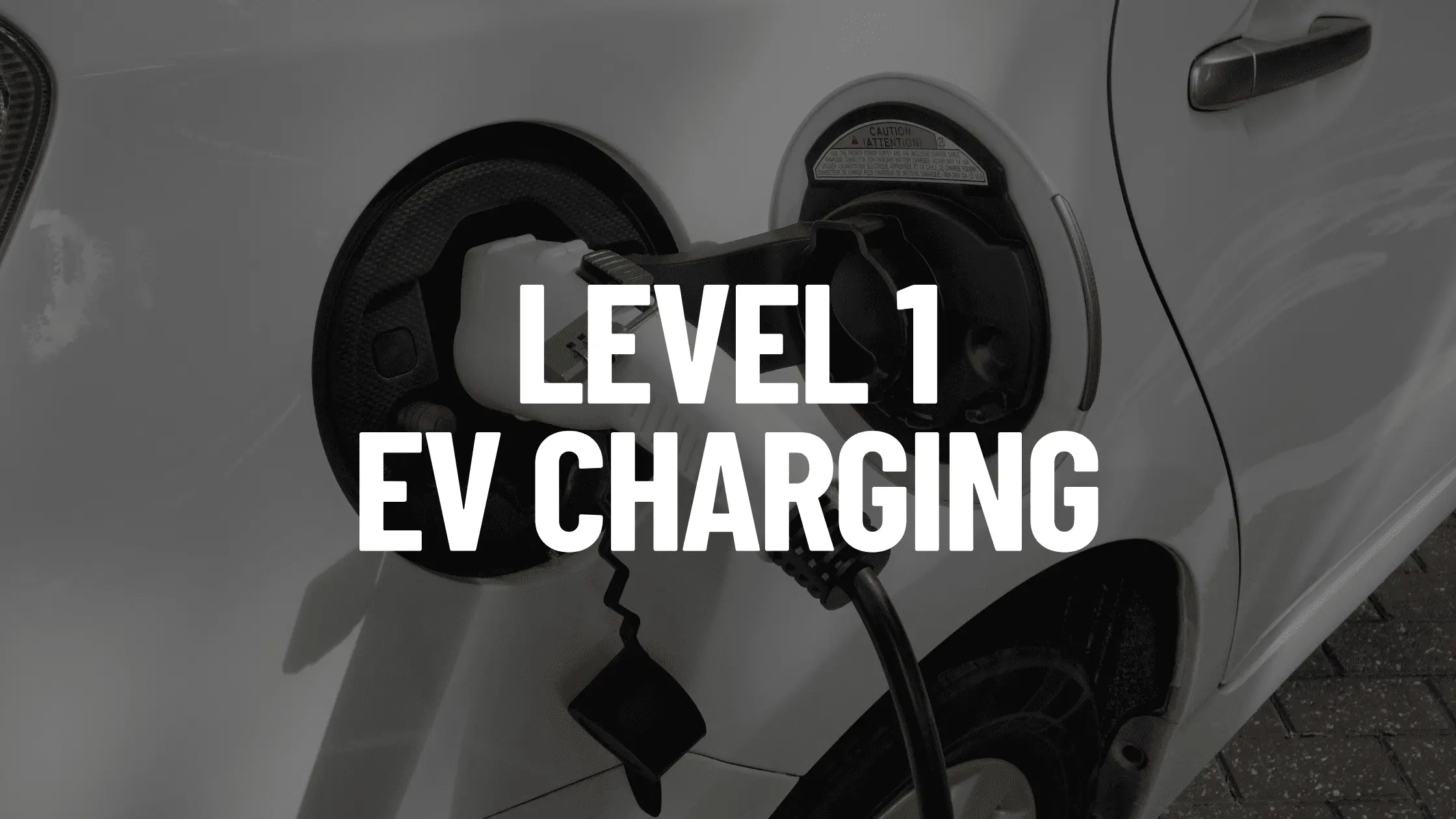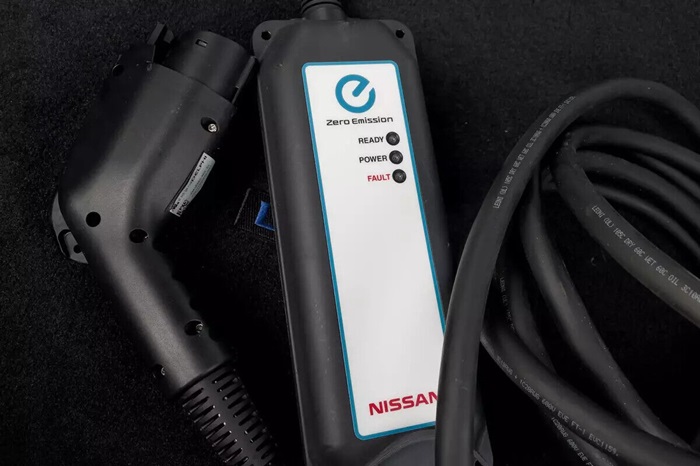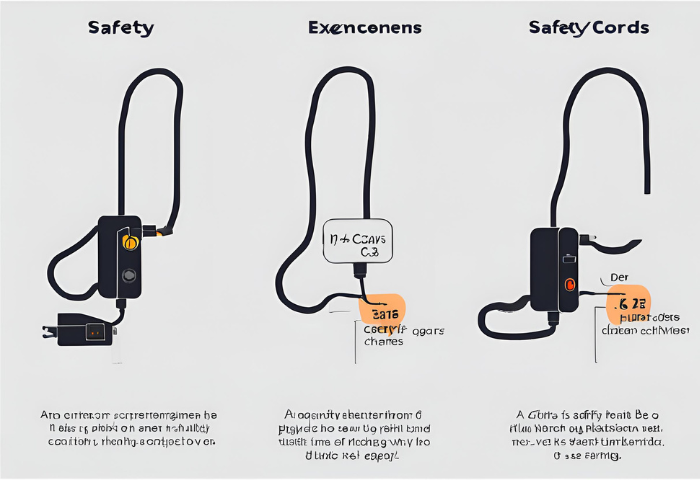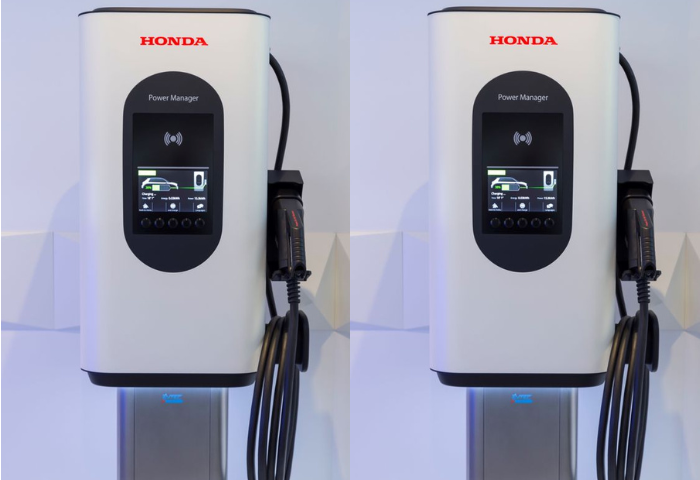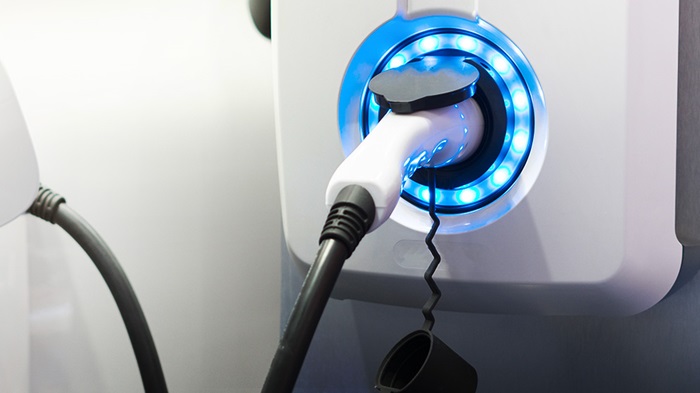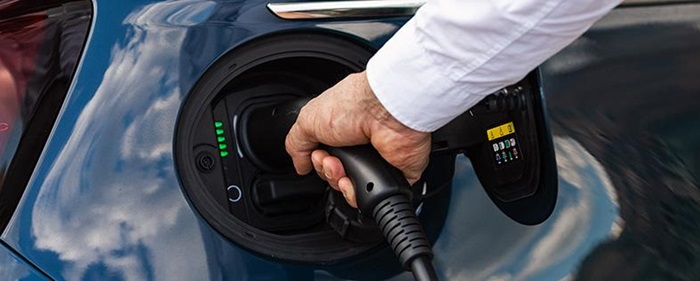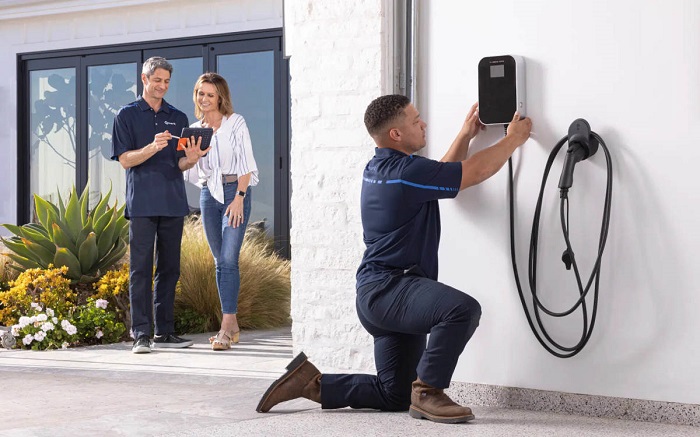Understanding Level 1 120v Charger: Everything You Need to Know
Level 1 chargers are the most basic and affordable option for electric vehicle charging. They are sufficient for overnight charging or topping off the battery for short trips.
In this comprehensive guide, we’ll delve into the world of Level 1 120v chargers, exploring their definition, functionality, and the basics you need to know about these essential electric vehicle (EV) charging devices.
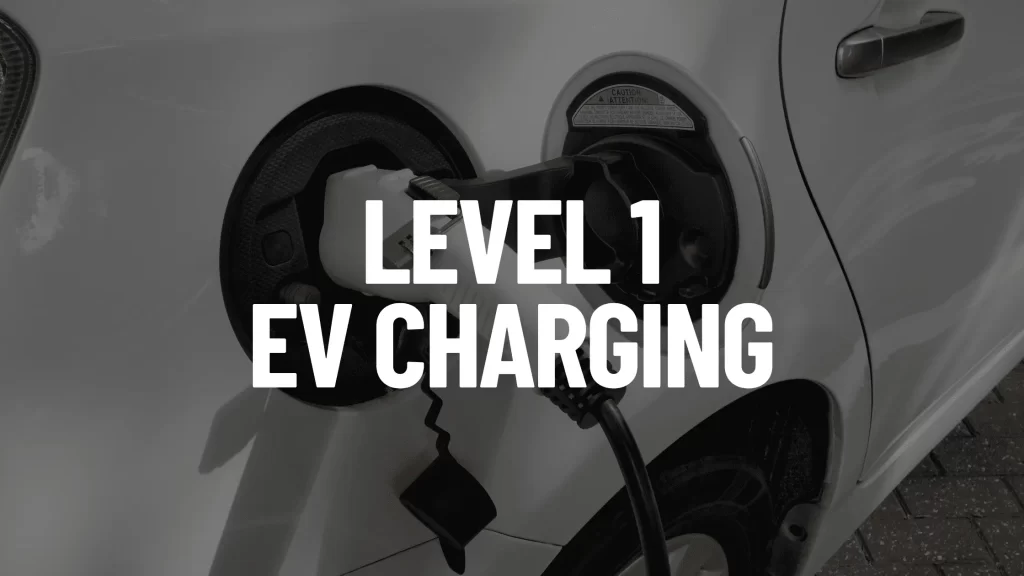
Understanding Level 1 120v Chargers: Everything You Need to Know
A Level 1 120-volt charger is a fundamental charging device designed for electric vehicles, operating on a standard household electrical outlet with a 120-volt AC power supply. These chargers provide the most basic form of charging and are often included with the purchase of an electric vehicle.
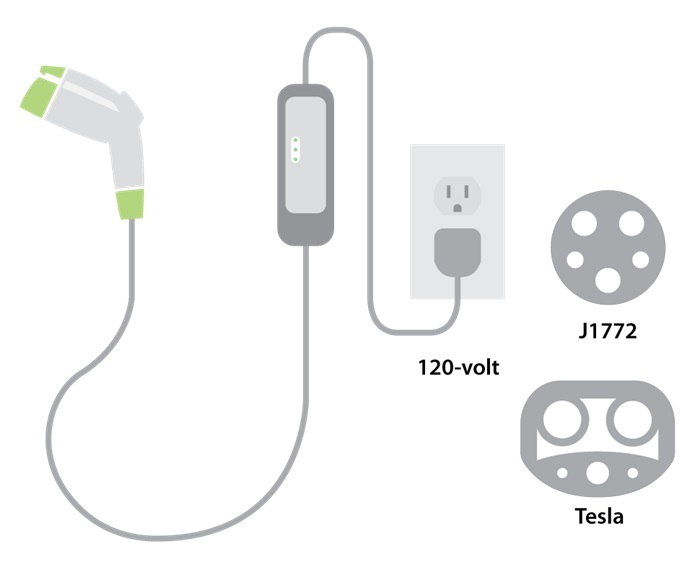
1. Definition and Functionality of Level 1 Chargers
Level 1 chargers serve as the entry point into EV charging, offering a simple and accessible solution for residential charging needs. They consist of a power cord with a standard plug on one end for connection to a household outlet, and a connector on the other end for plugging into the EV’s charging port.
These chargers work by drawing power from the electrical outlet and delivering it to the vehicle’s onboard charger. The onboard charger then converts the AC power into the DC power required to charge the EV’s battery.
2. Exploring the World of Level 1 120v Chargers
Level 1 120v chargers provide EV owners with a convenient way to charge their vehicles at home, offering simplicity and ease of use. They are ideal for overnight charging, ensuring that the vehicle is fully charged and ready for use each morning.
While Level 1 chargers may not offer the fastest charging speeds compared to higher-level chargers, they provide a cost-effective and accessible charging solution for residential environments. Additionally, they require no special installation beyond a standard household outlet, making them suitable for a wide range of EV owners.
3. Understanding the Basics of Level 1 Chargers
In summary, Level 1 120v chargers are essential charging devices for electric vehicles, providing a simple and accessible solution for residential charging needs.
They operate on standard household outlets with a 120-volt AC power supply, making them widely available and easy to use. While they may not offer the fastest charging speeds, they serve as an excellent option for overnight charging and ensuring that your electric vehicle is always ready for the road ahead.
Benefits and Advantages of Level 1 Charging
Level 1 charging, while considered the most basic form of electric vehicle (EV) charging, offers several benefits and advantages that make it an attractive option for many EV owners.
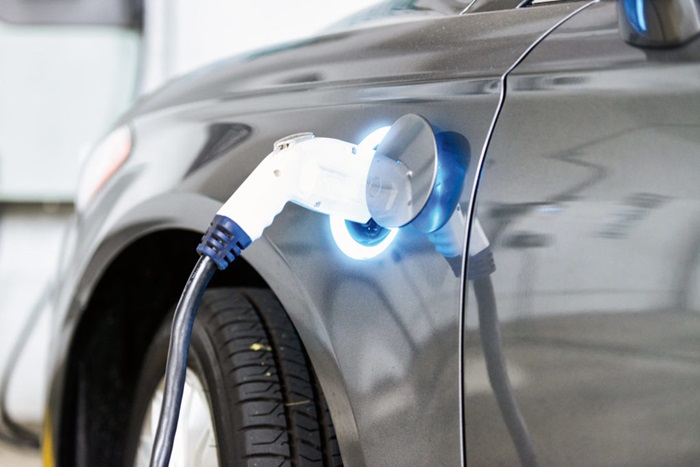
1. Convenience and Simplicity:
- Plug-and-Play Operation: No special installation is required. Simply connect the charger to a standard 120v household outlet and plug it into your car’s charging port.
- Wide Availability: Standard household outlets are ubiquitous, making Level 1 charging accessible at home, workplaces, or even while visiting friends and family with compatible outlets.
2. Cost-Effectiveness:
- Minimal Investment: In most cases, a Level 1 charger comes included with your EV purchase, eliminating any upfront cost. Even if purchased separately, they are very affordable compared to other charger types.
- Lower Charging Costs: Since Level 1 chargers utilize household electricity, the charging cost typically aligns with your standard home electricity rates. This can be more economical than relying solely on public fast-charging stations.
3. Environmental Considerations (Optional):
- Reduced Grid Strain: Level 1 chargers utilize existing electrical infrastructure, minimizing the need for significant upgrades to the power grid to support widespread EV adoption.
- Cleaner Electricity Source: If you source your home electricity from renewable sources like solar panels, Level 1 charging can contribute to a cleaner overall charging process for your EV.
4. Additional Advantages:
- Suitable for Overnight Charging: The slow charging rate makes them ideal for topping off your battery overnight when time is not a constraint.
- Gentle on Battery Health: While all charging methods can impact battery health over time, Level 1’s slower charging rate is generally considered less stressful on the battery compared to faster Level 3 DC charging.
Level 1 chargers might not be the perfect solution for everyone, especially those with longer daily commutes or limited access to charging at home. However, their convenience, affordability, and minimal environmental impact make them a valuable option for many EV owners.
By understanding these benefits, you can make an informed decision on whether a Level 1 charger aligns with your electric vehicle charging needs and lifestyle.
Level 1 vs. Level 2 vs. Level 3 Chargers: Unveiling the Differences
While Level 1 chargers offer convenience and affordability, they fall short in terms of charging speed. Here’s a comparison to Level 2 and Level 3 chargers to help you choose the right option:
| Compare | Level 1 | Level 2 | Level 3 |
| Charging Speed | Slowest option, adding only 3-5 miles of range per hour. | Significantly faster, providing 25-50 miles of range per hour. | The speed demon, delivers up to 200 miles of range within 30 minutes. |
| Power Source and Installation | Utilizes a standard 120v household outlet, requiring no installation. | Requires a dedicated 240v outlet installation, which might involve additional upfront costs. | High-voltage DC chargers found primarily at public charging stations; not suitable for home use due to their high-power requirements. |
| Cost | The most cost-effective option, often included with EV purchases and utilizes standard home electricity rates. | Moderate upfront cost for charger and installation, but operating expenses are lower than Level 3. | The highest operating cost per kWh compared to Levels 1 and 2, often charged by the minute. |
| Applications | Suitable for overnight charging or occasional top-ups. | Ideal for everyday charging at home or public stations. | It is best for long road trips when you need a quick boost to continue your journey. |
| Battery Health | Generally considered less stressful on battery health compared to Level 3 due to slower charging rates. | Frequent use might slightly accelerate battery degradation over time. However, advancements in battery technology are mitigating this effect. | |
Choosing the Right Charger: The best charger type depends on your driving habits and charging needs. Level 1 chargers are great for occasional use, while Level 2 offers a good balance between speed and cost for everyday charging. Level 3 chargers are lifesavers for long trips, but their higher cost and potential impact on battery health warrant strategic use.
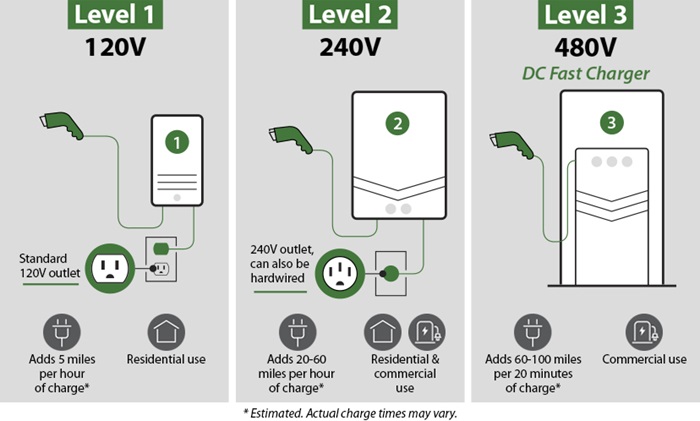
Installation and Practical Usage for Level 1 Charger
The beauty of Level 1 chargers lies in their simplicity. Unlike Level 2 chargers that require dedicated circuit installation, Level 1 chargers bypass that entirely.
1.Installation Requirements for Level 1 Chargers:
- Electrical Outlet: Ensure you have access to a standard household electrical outlet with a 120-volt AC power supply. The outlet should be located near where you plan to park your electric vehicle (EV) for charging.
- Proximity to Vehicle Parking: Choose a location for the charging station that allows easy access to your EV while parked. This could be in your garage, driveway, or a designated parking spot.
- Safety Considerations: Make sure the electrical outlet is properly grounded and meets local electrical codes and regulations. If unsure, consult with a qualified electrician to assess the suitability of the outlet for EV charging.
- Weather Protection: If the charging station will be installed outdoors, consider weather protection measures such as a weatherproof outlet cover or an outdoor-rated charging station enclosure.
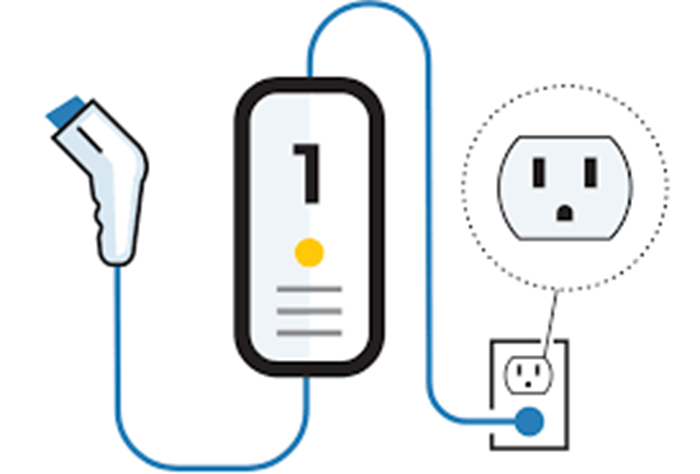
2.Steps to Properly Install a Level 1 EV Charger at Home:
- Select the Charging Location: Choose a suitable location for the charging station near the electrical outlet and within reach of your EV’s charging port.
- Mounting the Charger: If the Level 1 charger comes with mounting hardware, follow the manufacturer’s instructions to securely mount it in the chosen location. Ensure proper alignment and stability.
- Plug in the Charger: Plug the Level 1 charger into the standard household electrical outlet. Make sure the outlet is functioning properly and has sufficient capacity to support the charger’s power requirements.
- Connect to the EV: Once the charger is plugged in, connect the other end of the charging cable to your EV’s charging port. Ensure a secure connection to prevent disconnection during charging.
- Test the Charger: Before leaving the charging station unattended, perform a test to ensure that the charger is functioning properly and charging the EV as expected. Monitor the charging progress and check for any error messages or malfunctions.
3. Best Practices for Charging Your Electric Car Using a Level 1 Charger:
- Regular Monitoring: Periodically check the charging status of your EV to ensure it is charging properly and there are no issues with the charger or electrical connection.
- Unplugging After Charging: Once your EV reaches the desired charge level, unplug the charger from the electrical outlet to avoid unnecessary energy consumption and potential safety hazards.
- Avoiding Extension Cords: Whenever possible, avoid using extension cords with Level 1 chargers, as they can increase resistance and reduce charging efficiency. If an extension cord is necessary, use a heavy-duty cord rated for outdoor use and ensure it is properly sized for the charger’s power requirements.
- Safety Precautions: Follow all safety guidelines provided by the manufacturer and exercise caution when handling electrical equipment. If you encounter any issues or abnormalities during charging, discontinue use immediately and seek professional assistance.
Level 1 Chargers: Weighing the Pros and Cons
Level 1 chargers offer a simple and affordable entry point to EV charging, but they come with limitations. Here’s a breakdown of the advantages and disadvantages to help you decide if they’re the right fit for you:
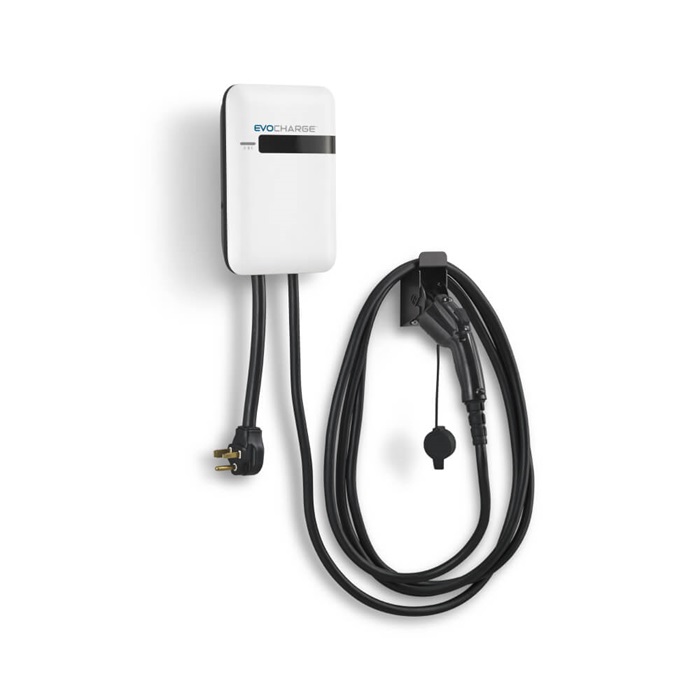
Pros:
- Convenience and Simplicity: No installation is required, just plug and play using a standard household outlet.
- Affordability: often included with an EV purchase or very inexpensive if purchased separately.
- Wide Availability: Standard household outlets are ubiquitous, making charging accessible at home, at workplaces, or even while visiting friends and family.
- Lower Charging Costs: Utilizes standard home electricity rates, potentially cheaper than relying solely on public fast-charging stations.
- Reduced Grid Strain: This puts minimal strain on the existing electrical grid.
- Gentler on Battery Health (Optional): Slower charging rates may be slightly less stressful on the battery compared to faster Level 3 charging.
Cons:
- Slow Charging Speed: The biggest drawback is that it adds only 3-5 miles of range per hour, making it unsuitable for daily commutes or situations requiring a quick charge.
- Limited Range Recovery: Not ideal for long trips where you need to significantly boost your range in a short amount of time.
- Not Ideal for All Climates (Optional): Extremely hot or cold temperatures can affect charging efficiency.
Comparing Level 1 and Level 2 Chargers:
Here’s a quick comparison to Level 2 chargers, which offer a faster charging solution:
| Feature | Level 1 Charger | Level 2 Charger |
| Charging Speed | 3-5 miles of range per hour | 25–50 miles of range per hour |
| Installation | No installation is required | Requires dedicated 240-volt outlet installation |
| Cost | The most affordable option | Moderate upfront cost for charger and installation |
| Best Suited For | Occasional charging, overnight topping off | Daily charging needs, faster range recovery |
Choosing Between Level 1 and Level 2:
If you primarily charge your EV at home and have access to a standard outlet, a Level 1 charger can be a convenient and cost-effective solution. However, if you require faster charging for daily commutes or long trips, a Level 2 charger might be a better investment, despite the upfront installation cost. Ultimately, the best choice depends on your individual driving habits and charging needs.
Making the Right Choice
Since you understand the pros and cons of Level 1 chargers, let’s delve into factors to consider when deciding if it’s the right choice for your electric vehicle (EV) and how to make an informed decision.
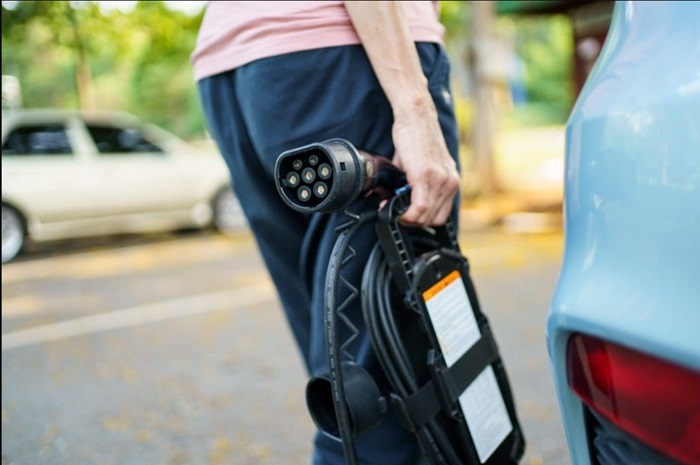
- Factors to Consider Before Opting for a Level 1 Charger:
Charging Speed Requirements: Consider your daily driving habits and charging needs. If you have a relatively short commute and can charge overnight, a Level 1 charger may suffice. However, if you require faster charging speeds, especially for longer trips or higher daily mileage, you may need to opt for a Level 2 charger.
Home Charging Setup: Evaluate your home’s electrical infrastructure and parking setup. Ensure that you have access to a suitable electrical outlet near where you park your electric car for charging. Consider the distance between the outlet and your vehicle, as well as any potential obstacles or safety concerns.
Budget: Determine your budget for purchasing and installing a charging station. Level 1 chargers are typically more affordable than Level 2 chargers, but the overall cost may vary depending on installation requirements and any additional accessories needed.
Vehicle Compatibility: Check your electric car’s charging specifications and compatibility with Level 1 chargers. Most electric vehicles come equipped with a Level 1 charging cable, but it’s essential to ensure compatibility and optimal charging performance.
- How to Choose the Right Level 1 Charger for Your Electric Car?
Check Voltage and Amperage Requirements: Ensure that the Level 1 charger you choose matches your electric car’s voltage and amperage requirements. Most Level 1 chargers operate on a standard 120-volt AC power supply.
Consider Charging Cable Length: Evaluate the length of the charging cable to ensure it can reach your vehicle’s charging port comfortably. Choose a charger with a cable length that accommodates your parking setup and provides flexibility during charging.
Review Safety Features: Look for Level 1 chargers with built-in safety features such as overcurrent protection, surge protection, and temperature monitoring to ensure safe and reliable charging operations.
Read User Reviews: Research different Level 1 charger models and read user reviews to gauge their performance, reliability, and user satisfaction. Choose a charger with positive reviews and ratings from other electric vehicle owners.
- Understanding Your Electric Car’s Charging Specifications:
Charging Connector Type: Ascertain the type of charging connector your electric car uses, such as J1772 or Type 1 for North American vehicles and Type 2 for European vehicles. Ensure that the Level 1 charger you select is compatible with your car’s charging port.
Charging Capacity: Check your electric car’s maximum charging capacity and charging rate to ensure compatibility with the Level 1 charger. Some electric vehicles may have lower charging capacities, requiring longer charging times with a Level 1 charger.
Battery Capacity: Consider your electric car’s battery capacity and charging requirements. Larger battery capacities may require longer charging times with a Level 1 charger, especially if you need to replenish a significant amount of charge.
- Factors to Consider When Selecting a Level 1 Charger:
Charging Speed: Understand that Level 1 chargers offer slower charging speeds compared to Level 2 chargers, typically providing around 2–5 miles of range per hour of charging. Evaluate whether this charging speed meets your daily driving needs and charging habits.
Ease of Installation: Choose a Level 1 charger that is easy to install and compatible with standard household electrical outlets. Consider whether you need additional accessories or modifications for installation, such as a wall mount or weatherproof enclosure.
Portability: If you require flexibility in charging locations, consider a portable Level 1 charger with a compact design and lightweight construction. Portable chargers allow you to charge your electric car at different locations, such as friends’ houses or public charging stations, using standard electrical outlets.
- Recommended Level 1 Chargers for Different Electric Vehicle Models:
Manufacturer-Provided Chargers: Many electric vehicles come equipped with a Level 1 charging cable as standard equipment. These manufacturer-provided chargers are designed specifically for each vehicle model and provide reliable charging performance.
Third-Party Chargers: There are several third-party Level 1 chargers available on the market, offering a range of features, designs, and price points. Research different charger models and choose one that meets your electric car’s charging specifications and your personal preferences.
- Which Scenarios are Ideal for Utilizing a Level 1 Charger Over a Level 2 Charger?
Overnight Charging at Home: Level 1 chargers are ideal for overnight charging at home, especially if you have access to a standard household electrical outlet near your parking space. Overnight charging allows you to start each day with a full battery, ready for your daily commute or errands.
Occasional Charging Needs: If you primarily use your electric car for short trips or occasional drives, a Level 1 charger may suffice for topping off the battery or maintaining a sufficient charge level between trips. Level 1 chargers are convenient for intermittent charging needs without the need for dedicated charging infrastructure.
Temporary Charging Solutions: Level 1 chargers can serve as temporary charging solutions in situations where Level 2 chargers are unavailable or impractical. For example, if you’re traveling and staying at accommodations without dedicated EV charging stations, you can use a Level 1 charger to replenish your car’s battery overnight using a standard electrical outlet.
Upgrading Charging Systems
As you’ve explored the world of Level 1 chargers, you might be considering the benefits of a Level 2 charger for faster charging. Here’s a roadmap to guide you through the transition process:
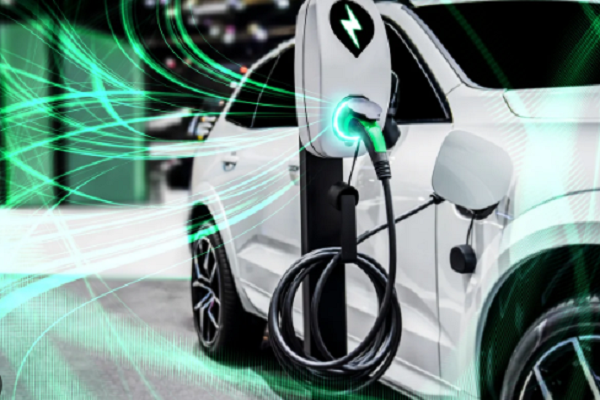
- Why Upgrade to Level 2?
Faster Charging: is the most compelling reason. Level 2 chargers offer significantly faster charging speeds, adding 25–50 miles of range per hour compared to Level 1’s 3-5 miles.
Convenience: Ideal for daily charging needs, reducing the time spent plugged in to regain range.
Flexibility: Level 2 chargers can still handle overnight charging when needed, offering more overall versatility.
- Considerations Before Upgrading:
Cost: Level 2 chargers require a dedicated 240v outlet installation, which incurs an upfront cost. However, the time saved with faster charging can offset this cost over time.
Electrical Panel Compatibility: Ensure your home’s electrical panel has the capacity to handle the additional load of a Level 2 charger. Consulting with a qualified electrician is crucial.
Permits and Regulations: Depending on your location, permits might be required for the installation. Research local regulations beforehand.
- Upgrading Your EV Charging System:
Consult a Qualified Electrician: A licensed electrician can assess your electrical panel’s capacity, recommend the appropriate Level 2 charger for your needs, and handle the safe installation of the dedicated outlet.
Choose a Level 2 Charger: Several Level 2 charger options are available, varying in power output, features, and cost. Consider factors like charging speed, portability (optional), and weatherproofing.
Installation Process: The electrician will install the dedicated outlet, ensuring it meets safety codes and integrates seamlessly with your existing electrical system.
- Economic Implications:
Upfront Cost: The installation and charger itself will have an initial cost.
Potential Savings: Faster charging at home can reduce reliance on public fast-charging stations, which often have higher electricity rates per kWh.
Long-Term Benefits: Faster charging cycles might improve battery life in some cases (consult your car’s manual for specific recommendations).
Upgrading to Level 2 is a significant investment, but the convenience and time saved with faster charging can be well worth it for many EV owners. Carefully evaluate your charging needs, budget, and electrical capacity before making the decision. Remember, a consultation with a qualified electrician can provide valuable insights and ensure a safe and efficient upgrade process.
Frequently Asked Questions (FAQs)
Here’s a breakdown of some frequently asked questions regarding Level 1 EV chargers:
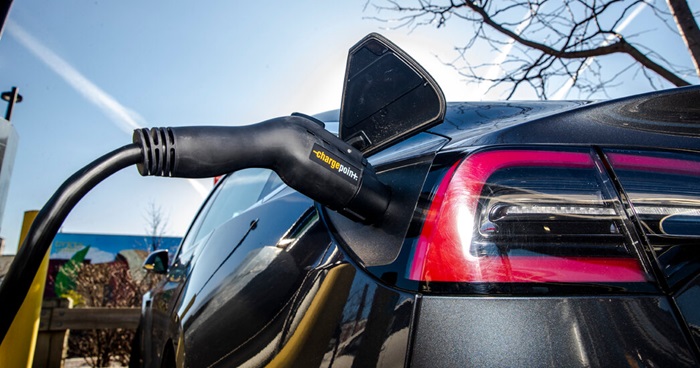
Can I Use a Level 1 Charger for Rapid Charging Needs?
- No, Level 1 chargers are not suitable for rapid charging needs. They offer a slow charging rate, typically adding only 3–5 miles of range per hour.
- This makes them ideal for overnight charging or topping off for short trips, but not for situations where you need a quick boost in range.
Is it Safe to Leave an Electric Vehicle Charging Overnight with a Level 1 Charger?
Yes, it is safe to leave your EV charging overnight with a Level 1 charger. Level 1 chargers are designed for long-duration charging and have safety features to prevent overheating or overloading. However, it’s recommended to:
- Unplug the charger once your car reaches the desired charge level. This helps maintain battery health by avoiding constantly staying at a full charge.
- Inspect the charger and outlet for any damage before charging.
Can Level 1 Chargers Be Used with Home Solar Charging Setups?
Yes, Level 1 chargers can be perfectly paired with home solar charging setups. In fact, it can be an environmentally friendly and potentially cost-saving way to charge your EV. The Level 1 charger will utilize the solar energy generated by your system to charge your car.
How Much Does it Cost to Install a Level 1 Charging Station at Home?
There is essentially no installation cost for a Level 1 charger. They are designed to plug into standard 120v household outlets, eliminating the need for any special electrical work.
In some cases, you might need an extension cord (not recommended for everyday use due to safety concerns) to reach your charging location, but the charger itself requires no installation.
CONSOLUTION
When selecting a charging station for your electric vehicle, consider your lifestyle and driving habits. Level 1 charging, while the slowest option, may suffice for drivers with short commutes and access to overnight charging at home.
Level 2 offers a faster charging solution for those who drive further distances or lack home charging capabilities. Level 3, the fastest option, is ideal for long-distance travel and situations requiring a quick charge. Ultimately, the best charging level depends on your individual needs and preferences.

Henry Michael is a leading expert in EV charging station research, specializing in innovative solutions for electric vehicle infrastructure. With a passion for sustainability and technological advancement, he is dedicated to advancing the accessibility and efficiency of EV charging worldwide.

